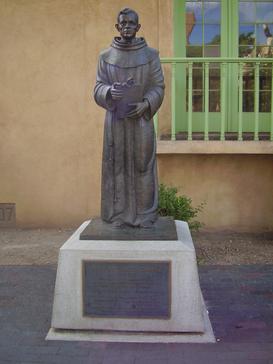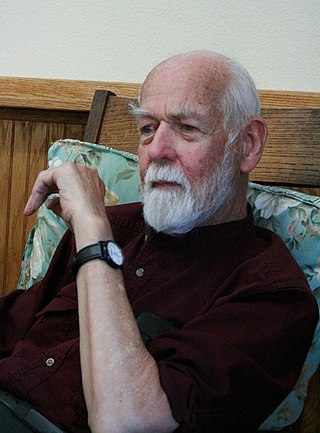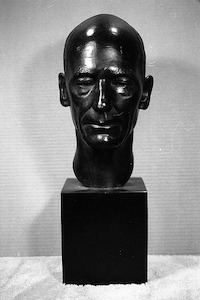Biography
Craig studied with the late Phil Davis at the University of Michigan and Paul Caponigro in Santa Fe. He received a BFA in Fine Arts from the University of Michigan, and an MFA in Photography from the Rochester Institute of Technology (notable alumni of Rochester Institute of Technology. Craig's first major one-person exhibition was at the Albuquerque Museum in 1994. Since that time he has been widely exhibited in museums and galleries throughout the United States and has received grants from the National Endowment for the Arts, the Samuel H. Kress Foundation and the McCune Charitable Foundation. He is the author of twelve books. His seven-year project documenting the moradas of the Penitente Brotherhood in New Mexico is archived at the DeGolyer Library, Southern Methodist University, Dallas, Texas.
His current project, the Native Light Collaboration, is a collaborative portrait project celebrating the lives and cultures of Native Americans. Throughout the American West, Varjabedian chronicles the personal identities of Native Americans – illuminating their individuality, culture, and resilience through authentic photographic portraits.
He is also the Director of The Eloquent Light Photography Workshops in Santa Fe, New Mexico. Offering workshops since 1986, offers private and small-group photography workshops featuring unique people and inspiring places found off the beaten path.
In the words of noted photography historian Beaumont Newhall, "The remarkable photographs by Craig Varjabedian are not only beautiful but also extremely valuable documents of architecture, culture, and lifestyle of Northern New Mexico. His work is extremely valuable from both artistic and historical viewpoints."

The Archdiocese of Santa Fe is a Latin Church ecclesiastical territory or diocese of the southwestern region of the United States in the state of New Mexico. While the mother church, the Cathedral Basilica of St. Francis of Assisi, is in the city of Santa Fe, its administrative center is in the city of Albuquerque. The Diocese comprises the counties of Rio Arriba, Taos, Colfax, Union, Mora, Harding, Los Alamos, Sandoval, Santa Fe, San Miguel, Quay, Bernalillo, Valencia, Socorro, Torrance, Guadalupe, De Baca, Roosevelt, and Curry. The current archbishop is John Charles Wester, who was installed on June 4, 2015.

Augustus Henry Julian Le Plongeon was a British-American antiquarian and photographer who studied the pre-Columbian ruins of America, particularly those of the Maya civilization on the northern Yucatán Peninsula. While his writings contain many notions that were not well received by his contemporaries and were later disproven, Le Plongeon left a lasting legacy in his photographs documenting the ancient ruins. He was one of the earliest proponents of Mayanism.

The Spanish Missions in New Mexico were a series of religious outposts in the Province of Santa Fe de Nuevo México — present day New Mexico. They were established by Franciscan friars under charter from the monarchs of the Spanish Empire and the government of the Viceroyalty of New Spain in a policy called Reductions to facilitate the conversion of Native Americans into Christianity.

Angelico Chavez, O.F.M., was a Hispanic American Friar Minor, priest, historian, author, poet and painter. "Angelico" was his pen name; he also dropped the accent marks from this name.

Martinez Hacienda, also known as Hacienda de los Martinez, is a Taos County, New Mexico hacienda built during the Spanish colonial era. It is now a living museum listed on the National Register of Historic Places. It is located on the bank of the Rio Pueblo de Taos.
Beaumont Newhall was an American curator, art historian, writer, photographer, and the second director of the George Eastman Museum. His book The History of Photography remains one of the most significant accounts in the field and has become a classic photographic history textbook. Newhall was the recipient of numerous awards and accolades for his accomplishments in the study of photo history.
Roibal, also spelled Roybal and Ruibal, is a Galician surname, later introduced into the Americas. It has its origin in the hamlet of Ruibal, in the municipality of Moraña, Galicia, Spain where 3% of the inhabitants are surnamed Ruibal.

The Pueblo Revival style or Santa Fe style is a regional architectural style of the Southwestern United States, which draws its inspiration from Santa Fe de Nuevo México's traditional Pueblo architecture, the Spanish missions, and Territorial Style. The style developed at the beginning of the 20th century and reached its greatest popularity in the 1920s and 1930s, though it is still commonly used for new buildings. Pueblo style architecture is most prevalent in the state of New Mexico; it is often blended with Territorial Revival architecture.

Douglas Kent Hall was an American writer and photographer. Hall was a fine art photographer and writer of fiction, poetry, nonfiction, essays, and screenplays. His first published photographs were of Jimi Hendrix and Jim Morrison, and In 1974 his first exhibition of photographs was at the Whitney Museum of American Art in New York.

David Vestal was an American photographer of the New York school, a critic, and teacher.
Larry Torres is an American writer and educator who was an associate professor of foreign languages at the University of New Mexico in Taos, New Mexico. He has taught Russian, French, Spanish, English, bilingual education and ancient languages. In 2003, he was the head of the university's Fine Arts and Culture Department. He is also a founding member of the Governor's School for International Studies in Tennessee.

A luminaria is a traditional small bonfire typically used during Las Posadas, a nine-day celebration culminating on Christmas Eve. The luminaria is widely used in Santa Fe, New Mexico. Luminaria is a loanword from Spanish that entered English in New Mexico.

Alex Webb is a photographer who makes vibrant and complex color photographs. He has been a member of Magnum Photos since 1979.

Territorial Style was an architectural style of building developed and used in Santa Fe de Nuevo México, popularized after the founding of Albuquerque in 1706. Reintroduced during the New Mexico Territory from the time of the Mexican and American territorial phases in 1821 until 1912, at which time New Mexico stopped being a territory and became a US state. Following the increase of its popularity in the 1930s and 1940s, it became referred to as the Territorial Revival style, which became another popular building style alongside New Mexico's Pueblo Revival style.

Nutt is an unincorporated community in Luna County, southern New Mexico, in the American Southwest. It is located nineteen miles southwest of Hatch on NM 26 at the intersection with NM 27.

Mysterious New Mexico: Miracles, Magic, and Monsters in the Land of Enchantment is a 2014 collection of thirteen investigations conducted by author Ben Radford into cases involving claims of the paranormal occurring in or with significant connections to New Mexico.
William Clift is an American photographer known for his black-and-white imagery of landscapes and of architectural subjects. Most of his work has been made in New Mexico, including Santa Fe where he has lived and worked since 1971, and of Mont Saint Michel in France, and St. Louis, MO.
Joan Myers is a fine art photographer best known for her images of Antarctica and the American West. She has also photographed the Japanese Relocation Camp from the 1940s, the Spanish pilgrimage to Santiago de Compostela, India wildlife, women as they age, and the extremes of ice and fire such as glaciers and volcanoes. She currently lives in northern New Mexico.
Nancy Marie Mithlo is a Chiricahua Apache curator, writer, and professor. Mithlo has worked as the chair of American Indian Studies at the Autry National Center Institute and as a professor of gender studies and American Indian Studies at the University of California, Los Angeles. She is the author and editor of several books about Native Americans and Indigenous art. Her exhibitions have been shown concurrently with the Venice Biennale.

Kenneth M. "Chap" Chapman (1875–1968) was an art historian, arts administrator, anthropologist, writer, teacher, and researcher of Native American art and culture in Santa Fe, New Mexico. The New Mexico Archive said of Chapman: "An advocate of Indian arts, his endeavors led to the revitalization of Pueblo pottery, the founding of the first Indian Fair and the Indian Arts Fund."












